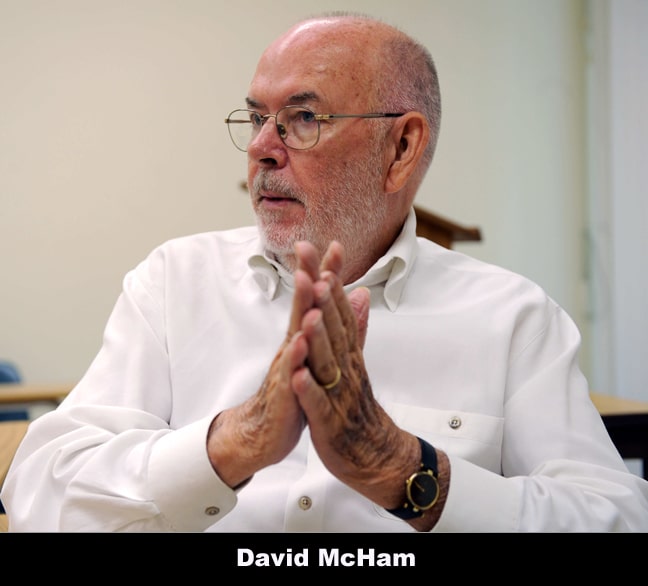Baylor’s UPI Connection May 12, 2021
Posted by Mia Moody-Ramirez in : Uncategorized , trackbackBy David McHam

Editorial
In the 1960s and ’70s, more people from Baylor were working at United Press International than from any university. Ed DeLong was the first, and his success helped pave the way for other alumni to follow.
Our accomplishments were such that when we had the dedication of the Castellaw building in 1974, the head of UPI, H.L. Stevenson, was a speaker.
People worked at The Associated Press also. Dave Cheavens, the journalism chair, had been head of the AP bureau in Austin for a quarter century.
Ed DeLong lives in Australia now. Here’s his account of how our connection with UPI started:
I had two Scripps Howard internships. The first, between my sophomore and junior years, was at the Houston Press where Ed Ray was managing editor. The second, the following summer, was at the Memphis Press Scimitar where Ed Ray had gone to again serve, as I recall, as managing editor. In any event, I left Memphis that summer with an offer of a job with Scripps Howard in Memphis upon my graduation. Meanwhile, back at Baylor, Dave Cheavens had approached me about going to work for the Associated Press. I thought my job future looked pretty settled, although I had some qualms about having heard that at AP it took forever to climb the corporate ladder.
Then came the Kennedy assassination.
(Note: Ed covered the assassination for The Lariat. The story won first place the next year in the Society of Journalism contests.)
Several months after the assassination, SDX held a meeting in Fort Worth, where UPI Southwest Division News Editor John Fallon spoke about UPI’s coverage of the assassination including the way Merriman Smith got the drop on everyone by grabbing the only phone in the presidential motorcade pool car and dictating all the way to the hospital while beating off efforts by his AP opposition to get the phone.
After the meeting, you took me up to meet Fallon and, out of the blue and completely to my surprise, said “Ed wants to go to work for UPI.” Fallon invited me to come for a job interview in Dallas, which I did as quickly as I could, and he hired me on the spot. I started out with UPI in the Southwest Division headquarters in Dallas (DA), where word got around that I had covered the assassination for the Lariat.
I worked DA from June 1965 to February 1966, when I was promoted to be bureau manager (and bureau janitor) of the one-person UPI bureau in Lubbock (LU). Because it was easy for division headquarters in Dallas to take care of LU coverage in my absence, I was sent to UPI’s bureau at the Manned Spacecraft Center south of Houston (LX) as part of the team assembled to cover Gemini spaceflights starting with Gemini 8 in March 1966.
Between Gemini 10 in July 1966 and the flight of Gemini 11 in September the manager of the LX bureau, Al Webb, was transferred to Saigon to cover the way. Nothing was said during the flight about who the next manager of LX might be, so just before we went home, I pulled aside UPI’s senior person on the coverage team (probably the then Southwest Division news editor, Jeff Grigsby) and said I’d like to be considered for the job. I thought my request was a long shot, but to my surprise I was notified in October 1966 that the job was mine.
So, in a nutshell:
February or March 1965 – SDX meeting
June 1965 – Started UPI Dallas (DA, after its location)
February 1966 – Bureau Manager UPI Lubbock (LU, after its location)
October 1966 – Bureau Manager UPI Space Center (LX, for Lunar Exploration)
I made no secret that the training I got at Baylor prepared me for my rapid ascent from an unknown to a byline printed around the world, though I must acknowledge there was a lot of being the right place at the right time and seizing opportunities as they were presented to me. Not long after I was made manager at LX, I met UPI Editor HL Stevenson and the two of us hit it off, with me being invited several times to stay at his house. I began lobbying Stevenson and others in UPI to have at least one other person who also had spaceflight expertise. My choice was Paul Harral, and UPI went along with it. Meanwhile, you were doing your own bridge building with UPI and before long there was an acknowledged “Baylor Mafia” at UPI.
As the song says, “Those were the days, my friend ….”
After DeLong, these Baylor people worked at UPI: Paul Harral, Preston Kirk, Tommy Miller, Larry Surratt, Ron Littlepage, Kay Brown, Tom Belden, Mike Kennedy, Kay Moore, Paul Parsons and Rowland Stiteler.
Note: Delong later covered the Pentagon for UPI and later was a vice president of UPI. Others, after UPI, went on to careers mostly in newspapers and magazines.
Thanks to Dave Cheavens, these people worked at the AP: Bob Gassaway, Yvonne Baskin, Paul Parsons (after UPI) and Sharon Herbaugh.
Note: Gassaway was assigned to Vietnam during the war, and for a year, his was the daily byline summarizing the events in Vietnam. Sharon Herbaugh died in 1993 in a helicopter crash in Pakistan, where she was the AP bureau chief.
Comments»
no comments yet - be the first?